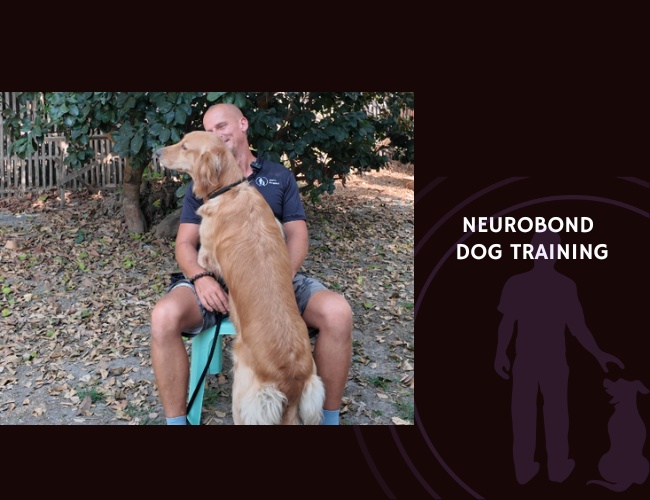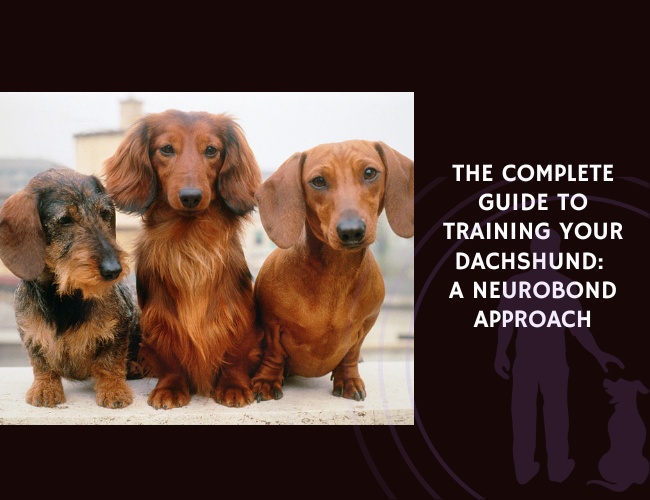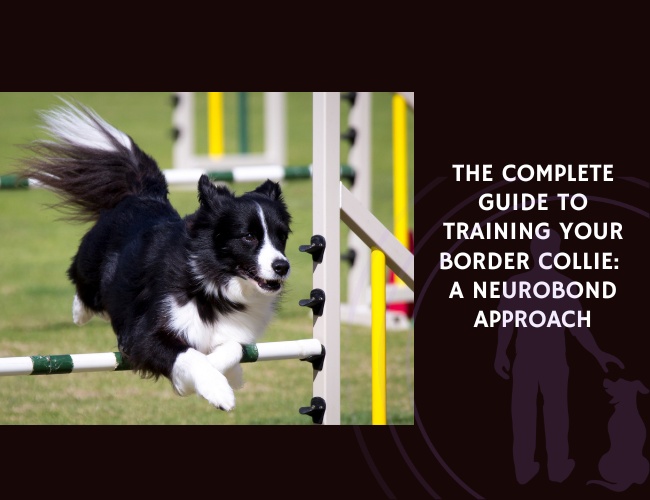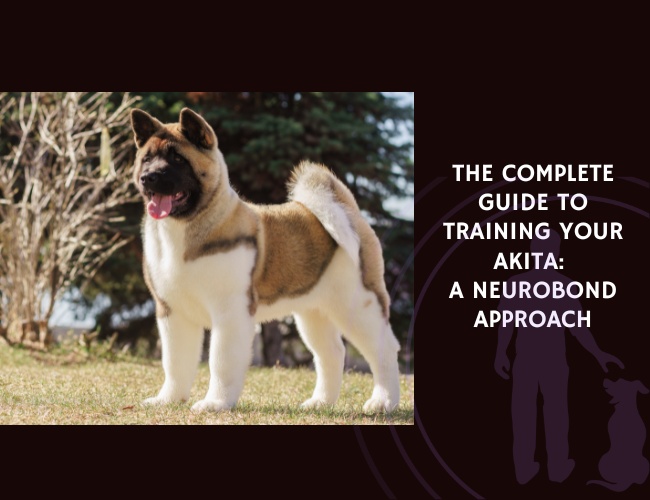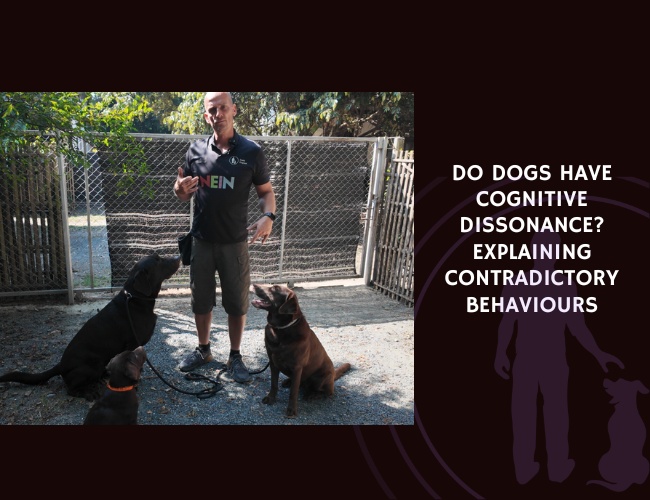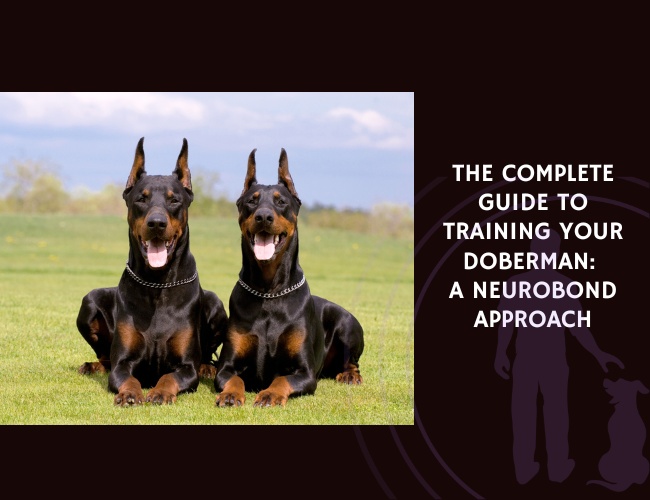Introduction: Understanding the Connection-Based Training Revolution
Welcome to a transformative journey that will reshape how you and your furry companion experience life together. If you’ve landed here searching for yet another command-based training manual, let us guide you toward something far more profound—a training philosophy that honors your dog’s natural instincts while building an unbreakable bond of trust and understanding.
The NeuroBond approach isn’t just another training method; it’s a paradigm shift in how we relate to our canine partners. Born from the understanding that dogs are complex emotional beings with their own logic and worldview, this philosophy recognizes that true training success comes not from control, but from connection. When we allow our dogs to be themselves while gently guiding their instincts toward constructive outcomes, we unlock a level of cooperation that mechanical obedience could never achieve.
In this comprehensive guide, we’ll explore how your dog’s unique cognitive abilities, temperament, and natural behaviors become the very pathways through which learning occurs. You’ll discover why the invisible leash of trust is far more powerful than any physical restraint, and how building a genuine emotional connection transforms training from a chore into a collaborative dance between two species who’ve evolved together for millennia. 🐾
Character & Behavior: The Foundation of Understanding
The Cognitive Landscape of Your Canine Companion
Your dog’s mind is a marvel of evolution, equipped with problem-solving abilities that often surprise even seasoned trainers. Research has consistently shown that dogs possess a prefrontal cortex—the brain region responsible for planning and decision-making—that’s remarkably developed for non-human animals. This means your four-legged friend isn’t just responding to stimuli; they’re actively thinking, evaluating, and making choices based on their understanding of the world.
Observational Intelligence: Dogs excel at reading human body language, often picking up on subtle cues we don’t even realize we’re giving. This heightened awareness means they’re constantly learning from us, whether we’re actively training or not. In the NeuroBond framework, we harness this natural ability by becoming more conscious of our own movements and energy, creating clear, consistent communication channels.
Emotional Sensitivity: Beneath that waggy exterior lies a deeply sensitive soul. Dogs are emotional barometers, keenly attuned to the moods and feelings of their human companions. This sensitivity isn’t a weakness—it’s a superpower that allows for deep bonding when approached with understanding and respect. The NeuroBond method recognizes that emotional attunement is the cornerstone of effective training.
Individual Personality Development: Just as humans have unique personalities, so do our canine companions. Research shows that from as early as six months, dogs begin displaying consistent personality traits that persist throughout their lives. Some are naturally bold explorers, while others are cautious observers. The beauty of the NeuroBond approach is that it doesn’t try to change these fundamental traits but works with them to create harmonious behaviors.
Understanding Natural Behaviors Through a NeuroBond Lens
Every behavior your dog exhibits—from the adorable to the challenging—is feedback about their internal state and their relationship with you. When we shift our perspective from “my dog is being difficult” to “my dog is communicating something important,” we open the door to genuine understanding and lasting behavioral change.
The Logic of Canine Behavior: Your dog operates on a different logic system than you do, but it’s always valid in their world. That seemingly random barking at the corner of the room? Perhaps they’re hearing frequencies you can’t detect. The sudden zoomies after a bath? A natural stress-release mechanism. By acknowledging that all behavior has a purpose, we can address the root cause rather than just the symptom.
Instincts as Learning Pathways: Traditional training often tries to suppress natural instincts, but the NeuroBond philosophy takes a revolutionary approach—we use these instincts as the very pathways through which learning occurs. A dog with strong prey drive isn’t “problematic”; they’re showing us exactly how they’re wired to learn through chase and capture games. A vigilant guardian breed isn’t “stubborn”; they’re demonstrating their natural inclination to assess situations independently.
Vocalization & Communication: Learning Your Dog’s Language
The Symphony of Canine Expression
Your dog is constantly talking to you—not with words, but through a rich tapestry of vocalizations, body language, and energy shifts. Understanding this multi-modal communication system is essential for building the deep connection that NeuroBond training requires. Let’s decode the messages your furry friend is sending and learn how to respond in ways that strengthen your bond.
Vocal Variations and Their Meanings: Every bark, whine, and growl tells a story. A high-pitched, repetitive bark often signals excitement or attention-seeking, while a low, singular woof might be an alert. Whining can indicate anything from anticipation to anxiety, and the context is everything. In NeuroBond training, we don’t silence these vocalizations—we acknowledge them as valid communication and teach alternative ways to express the same needs.
The Silent Conversation: Beyond vocalizations, your dog speaks volumes through body language. A relaxed tail wag tells a different story than a stiff, high tail. Soft eyes invite connection, while hard stares might signal stress or intense focus. By becoming fluent in this silent language, you’ll know exactly when your dog is ready to learn, when they need a break, and when they’re asking for support.
Energy as Communication: Dogs are masters at reading energy—that intangible quality that encompasses our emotional state, intentions, and presence. When you’re anxious, your dog knows it before you’ve said a word. The NeuroBond approach teaches us to become conscious of our energy output, using calm, confident presence as a training tool more powerful than any treat or command.
Building Two-Way Communication
True communication is never one-sided. While we’re learning to read our dogs, we must also teach them how to read us more effectively. This creates a feedback loop of understanding that deepens with every interaction.
Check-Ins and Connection Points: One of the foundational elements of NeuroBond training is teaching your dog to regularly “check in” with you—making eye contact, orienting their body toward you, or simply pausing to acknowledge your presence. These micro-moments of connection become the invisible thread that keeps you connected even in distracting environments.
Structured Signals: While we don’t rely on rigid commands, we do create clear, consistent signals that help our dogs understand our intentions. These might be specific body positions, energy shifts, or contextual cues that naturally guide behavior. The key is consistency without rigidity—allowing for the organic flow of communication while maintaining clear boundaries.
Training & Education: The NeuroBond Method in Practice
The Philosophical Foundation
Before we dive into specific techniques, it’s crucial to understand that NeuroBond training isn’t about teaching your dog to perform tricks on command. It’s about creating a shared language and mutual understanding that makes cooperation the natural choice. This approach recognizes that true education happens when the learner discovers solutions through their own experience, guided by a trusted mentor.
Connection Over Control: Traditional training often focuses on control—making the dog do what we want, when we want it. The NeuroBond philosophy flips this script entirely. We seek connection first, knowing that when a dog truly trusts and understands us, cooperation follows naturally. This doesn’t mean permissiveness; it means building a relationship where boundaries are respected because they make sense to the dog, not because they fear consequences.
The Operating System Metaphor: Think of your dog as a sophisticated operating system on four legs. What you input through your interactions, energy, and consistency is exactly what you’ll receive in return. Zero effort yields zero results, but thoughtful, connected engagement creates a responsive, eager partner. Every moment you spend with your dog is programming this system—make those moments count.
Practical Application: From Theory to Reality
Now let’s explore how these philosophical principles translate into everyday training scenarios. Remember, in NeuroBond training, we’re not teaching isolated behaviors—we’re building a comprehensive communication system.
The Power of Natural Consequences: One of the most elegant aspects of NeuroBond training is allowing dogs to discover appropriate behaviors through their own actions. Take leash walking as an example. Instead of constantly correcting pulling, we might simply stop moving when the leash tightens. The dog quickly learns that forward motion—something they desperately want—only happens when the leash is loose. They’ve found the solution themselves, making it far more memorable than any correction could be.
Building the Foundation – The First Step: All NeuroBond training begins with establishing trust and emotional connection. Before we ask our dogs to walk nicely, come when called, or settle on command, we must first build their desire to be near us, to look to us for guidance, and to trust our leadership. This happens through:
- Proximity Games: Rewarding your dog simply for choosing to be near you
- Eye Contact Exercises: Making looking at you the most rewarding thing in their world
- Calm Presence Work: Teaching your dog that relaxation near you brings good things
From Bond to Task – The Invisible Commands: Once the emotional foundation is solid, specific behaviors emerge almost magically. A dog who genuinely wants to be near you doesn’t need to be taught a formal “heel”—they naturally gravitate to your side. A dog who trusts your judgment checks in before chasing that squirrel. These “invisible commands” are far more reliable than any trained behavior because they come from internal motivation rather than external pressure.
Age-Appropriate Training Strategies
Early Puppyhood (8-16 weeks): This critical socialization window is when we lay the groundwork for a lifetime of learning. But NeuroBond socialization goes beyond simple exposure—it’s about creating positive associations while maintaining the puppy’s trust in you as their guide. Every new experience should reinforce the message: “The world is interesting and sometimes challenging, but you’re safe with me.”
Adolescence (6-18 months): The teenage phase can test even the strongest bonds. Hormones surge, independence emerges, and previously reliable behaviors might temporarily disappear. This is when the NeuroBond approach truly shines. Instead of battling for control, we lean into the relationship we’ve built, providing structure while respecting the dog’s developmental need to explore boundaries.
Adult Learning: Contrary to popular belief, adult dogs are excellent learners—especially when approached through the NeuroBond method. Without the distractions of puppyhood or adolescence, adult dogs can often form deeper, more nuanced connections with their humans. If you’re starting NeuroBond training with an adult dog, focus first on building trust rather than changing behaviors. The behaviors will shift naturally once the relationship is solid.
Senior Years: As our dogs age, the NeuroBond approach becomes even more valuable. Cognitive changes might make traditional command-based training frustrating, but the emotional connection remains strong. Senior dogs benefit from gentle mental stimulation, predictable routines, and the security of knowing their human understands and supports them through physical and mental changes.

Performance & Activities: Channeling Natural Abilities
Understanding Your Dog’s Innate Drives
Every dog comes equipped with a unique set of instincts and drives shaped by thousands of years of selective breeding and evolution. In the NeuroBond framework, these aren’t obstacles to overcome—they’re the very engines that power learning and engagement. By understanding and channeling these natural abilities, we create training scenarios where success is almost inevitable.
Working With, Not Against, Natural Instincts: Does your dog love to chase? Perfect—that prey drive becomes the motivation for recall games and focused attention work. Is your pup a natural guardian? Wonderful—we’ll channel that protective instinct into appropriate alert behaviors and boundary setting. The key is recognizing that these drives are gifts, not problems to be solved.
Mental Stimulation Through Purpose: Dogs thrive when they have a job to do, even if that “job” is simply finding hidden treats or learning a new puzzle. The NeuroBond approach emphasizes giving dogs purposeful activities that satisfy their cognitive needs while strengthening your bond. This might look like:
- Scent work games that tap into their incredible olfactory abilities
- Problem-solving challenges that exercise their prefrontal cortex
- Collaborative tasks where dog and human work together toward a goal
Creating Structured Freedom
One of the most beautiful aspects of NeuroBond training is how it creates freedom through structure. This isn’t the paradox it might seem—when dogs understand boundaries and feel secure in their relationship with us, they actually have more freedom to explore and express themselves authentically.
The Invisible Leash in Action: As trust deepens and communication becomes second nature, many NeuroBond-trained dogs develop what we call the “invisible leash”—a natural tendency to stay within a comfortable range of their human without any physical restraint. This isn’t trained through repetition or commands; it emerges organically from the dog’s desire to maintain connection.
Environmental Confidence: Dogs trained through NeuroBond methods typically show greater confidence in new environments because they’ve learned to look to their human as a source of information and support. Instead of reacting fearfully or overexcitedly to novel stimuli, they check in: “What does my person think about this?” This creates a feedback loop of calm confidence that serves both dog and human well in any situation.
Nutritional Recommendations: Feeding the Body-Mind Connection
The NeuroBond Approach to Nutrition
While it might seem odd to include nutrition in a training guide, the NeuroBond philosophy recognizes that a dog’s physical health directly impacts their ability to learn, connect, and thrive in training. Just as you wouldn’t expect peak performance from yourself on a diet of junk food, we can’t expect our dogs to be their best selves without proper nutritional support.
Food as Communication: How we feed our dogs is another form of communication. Regular meal times create predictable structure. Hand-feeding strengthens bonds. Using meals as training opportunities reinforces the connection between you and all good things in your dog’s life. Every meal is a chance to deepen your relationship.
Nutritional Support for Cognitive Function: Research increasingly shows that certain nutrients directly impact cognitive function in dogs. Omega-3 fatty acids support brain health, antioxidants combat age-related cognitive decline, and balanced proteins provide the building blocks for neurotransmitters. When we feed our dogs well, we’re literally feeding their ability to learn and connect with us.
Practical Feeding Strategies
Routine Without Rigidity: While dogs benefit from predictable meal times, the NeuroBond approach maintains flexibility. Sometimes life happens, and meals are late. A dog secure in their relationship with you won’t panic—they trust that food will come. This trust is built through consistency over time, not rigid adherence to the clock.
Training Through Nutrition: Every meal is a training opportunity. Whether it’s practicing patience while the bowl is prepared, maintaining calm behavior during feeding, or using portion of meals for training exercises, we can reinforce desired behaviors while meeting nutritional needs. This integration makes training a natural part of daily life rather than a separate activity.
Connected. Conscious. Cooperative.
Your dog isn’t resisting—they’re reaching.
What appears as disobedience is often your dog’s attempt to connect, communicate, or cope. The NeuroBond approach reveals that behind every behaviour is a need seeking recognition.
Control isn’t connection—it’s interruption.
Traditional methods impose, correct, and command. NeuroBond listens, guides, and aligns. When training becomes relationship, trust becomes the reward and obedience becomes a choice.



The bond teaches what commands cannot.
Through emotional attunement, shared rhythm, and instinct-based play, training becomes a dance of mutual awareness. What you build together replaces what you try to force.
Health Concerns: Supporting the Whole Dog
The Mind-Body Connection in Training
The NeuroBond philosophy recognizes that physical health and behavioral health are inextricably linked. A dog in pain can’t learn effectively. A dog with allergies might seem “distracted” when they’re actually uncomfortable. By attending to our dogs’ physical well-being, we create the optimal conditions for training success.
Recognizing Pain and Discomfort: Dogs are masters at hiding pain—a survival instinct from their wild ancestors. As their trusted partners, we must become detectives, noticing subtle changes that might indicate physical discomfort:
- Reluctance to perform previously enjoyed activities
- Changes in gait or posture
- Increased reactivity or withdrawal
- Alterations in sleep patterns or appetite
When these signs appear, addressing the physical issue takes precedence over any training goals. A dog who trusts you to recognize and address their pain will deepen their bond with you immeasurably.
Stress and Its Physical Manifestations: Chronic stress doesn’t just affect behavior—it impacts physical health through elevated cortisol levels, compromised immune function, and digestive issues. The NeuroBond approach inherently reduces stress by eliminating punishment, building confidence, and creating predictable, safe environments for learning.
Proactive Health Management
Regular Veterinary Partnership: Your veterinarian is a crucial part of your NeuroBond training team. Regular check-ups ensure that any physical issues are caught early, before they can impact training or quality of life. A vet who understands your training philosophy can provide support that aligns with your connection-based approach.
Environmental Health Factors: Everything in your dog’s environment impacts their ability to learn and connect. This includes:
- Sleep quality: A well-rested dog learns better
- Exercise balance: Neither under nor over-exercised
- Social health: Appropriate interactions with other dogs and humans
- Mental stimulation: Preventing boredom without creating overwhelm
Lifestyle & Environment: Creating the Ideal Learning Ecosystem
Designing Your Dog’s World
The environment we create for our dogs either supports or hinders their ability to learn and thrive. In the NeuroBond framework, we thoughtfully design spaces and routines that naturally encourage desired behaviors while meeting our dogs’ instinctive needs.
Safe Spaces and Brave Spaces: Every dog needs both types of environments. Safe spaces are their retreat zones—places where they can fully relax without any demands or expectations. Brave spaces are where gentle challenges occur, where learning happens, where confidence builds. The balance between these creates optimal conditions for growth.
Environmental Management vs. Training: Sometimes the smartest training move is no training at all—just thoughtful environmental management. Can’t stop your dog from counter surfing? Keep counters clear while you build the relationship and impulse control. Dog reactive to doorbells? Muffle the sound while you work on calm greetings. This isn’t avoidance; it’s strategic support that sets everyone up for success.
The Family System Approach
Dogs as Family Members: The NeuroBond philosophy views dogs as full family members with their own needs, preferences, and contributions. This doesn’t mean they have equal decision-making power—just as children need loving boundaries, so do our dogs. But it does mean their well-being is considered in family decisions and daily routines.
Consistency Across Caregivers: When multiple people interact with your dog, consistency becomes crucial—not rigid rule-following, but shared understanding of the dog’s needs and communication style. Everyone doesn’t need to do everything exactly the same way, but the core principles of respect, connection, and positive guidance should remain constant.
Lifestyle Integration
Training as a Way of Life: In the NeuroBond approach, training isn’t something you do for 15 minutes twice a day—it’s woven into every interaction. Morning greetings reinforce calm connection. Meal prep becomes an impulse control exercise. Evening walks strengthen the invisible leash. When training becomes lifestyle, progress happens naturally and continuously.
Balancing Structure and Spontaneity: While routine provides security, too much rigidity can create anxiety. The NeuroBond approach finds the sweet spot—enough structure that dogs know what to expect, enough flexibility that they learn to adapt. This balance prepares them for real life, which rarely follows a perfect schedule.
Senior Care: Honoring the Golden Years
The Evolution of the Bond
As our dogs age, the NeuroBond approach becomes even more precious. The relationship you’ve built over years of connection-based training creates a foundation of trust that carries both of you through the challenges of aging. Senior dogs may lose their hearing, their vision, or some cognitive function, but the emotional connection remains strong—often growing even deeper.
Adapting Without Abandoning: Physical and cognitive changes don’t mean abandoning training—they mean adapting our approach. A dog who can no longer hear verbal cues can still respond to visual signals or gentle touch. A dog with mobility issues might not heel perfectly but can still maintain that invisible leash connection through their desire to stay close.
Cognitive Enrichment for Aging Minds: Research shows that mental stimulation can slow cognitive decline in senior dogs. But this doesn’t mean drilling commands or teaching new tricks. In the NeuroBond framework, cognitive enrichment might look like:
- Gentle scent games that don’t require much movement
- Simple problem-solving with food puzzles
- New but manageable experiences that keep the mind engaged
- Maintaining social connections with familiar friends
Quality of Life Through Connection
Reading the Changing Needs: As your dog ages, their communication might become more subtle. The exuberant bark becomes a quiet woof. The full-body wag becomes a gentle tail swish. Because you’ve spent years learning your dog’s language, you’re uniquely equipped to notice and respond to these changes. This deep understanding becomes invaluable in making quality-of-life decisions.
The Gift of Presence: Sometimes the most powerful “training” we can offer our senior dogs is simply our calm, loving presence. Sitting quietly together, gentle grooming sessions, or slow meandering walks where they set the pace—these moments of connection are training in its purest form. They reinforce the message that has underpinned everything: “You are safe, you are loved, and I understand you.”
Preparing for the Final Lesson: The NeuroBond philosophy doesn’t shy away from life’s ultimate reality. The deep connection we’ve built helps us recognize when our dogs are ready to leave, and it gives us the strength to make difficult decisions from a place of love rather than fear. Even in those final moments, we’re still communicating, still connected, still honoring the bond that has enriched both our lives.
Conclusion: Is the NeuroBond Approach Right for You?
As we reach the end of this comprehensive guide, you might be wondering whether the NeuroBond approach aligns with your goals and lifestyle. Let’s explore what success looks like in this framework and help you make an informed decision about your training journey.
What Success Looks Like
In traditional training paradigms, success is often measured by compliance—does the dog sit on command, walk without pulling, come when called? While NeuroBond-trained dogs typically excel at these behaviors, our metrics for success run much deeper:
- Emotional Resilience: Your dog approaches new situations with confidence, knowing you’re their trusted guide
- Voluntary Cooperation: Desired behaviors emerge from internal motivation rather than external pressure
- Mutual Understanding: You can read your dog’s subtle communications, and they understand your intentions
- Joyful Partnership: Training sessions are bonding opportunities that both of you genuinely enjoy
- Adaptability: Your dog navigates life changes with grace because the relationship, not rigid rules, provides security
Self-Assessment Questions
Before embarking on the NeuroBond journey, consider these reflective questions:
Are you ready to examine your own energy and communication? This approach requires as much growth from humans as from dogs. You’ll need to become conscious of your emotional states, body language, and the subtle signals you send.
Can you embrace patience over quick fixes? While NeuroBond training often yields faster long-term results, it doesn’t promise instant obedience. Building genuine connection takes time, and some days will show more progress than others.
Do you value relationship over performance? If your primary goal is competition-level precision or impressive tricks, traditional training might better serve those specific aims. But if you want a deep, communicative partnership that enriches both your lives, NeuroBond offers something special.
Are you willing to see training as a lifestyle? This isn’t a six-week course or a checklist to complete. It’s a fundamental shift in how you relate to your dog every single day. The rewards are immense, but it requires genuine commitment to a new way of being together.
Your Next Steps
If the NeuroBond philosophy resonates with you, here’s how to begin your journey:
- Start with Observation: Before changing anything, spend a week simply observing your dog’s natural behaviors, communication attempts, and responses to various situations. This baseline understanding will inform your approach.
- Build Foundation Connections: Begin with simple proximity rewards and eye contact games. Make being near you and checking in with you the most rewarding experiences in your dog’s day.
- Practice Emotional Regulation: Work on your own ability to maintain calm, confident energy, especially in challenging situations. Your dog will mirror your emotional state.
- Seek Learning Opportunities: Every interaction becomes a chance to strengthen your connection. Transform daily routines into bonding experiences.
- Connect with Community: Find others who understand and practice connection-based training. Share experiences, challenges, and victories with people who get it.
A Final Thought
The NeuroBond approach isn’t just about training dogs—it’s about transforming relationships. When we stop trying to control and start seeking to connect, when we honor our dogs’ perspectives while providing loving guidance, when we build trust as the foundation for all learning—magic happens.
Your dog doesn’t need you to be a perfect trainer. They need you to be a trustworthy partner who sees them, understands them, and guides them with patience and love. In return, they’ll offer you loyalty, cooperation, and a depth of connection that enriches your life in ways you never imagined.
The journey ahead won’t always be easy, but it will always be worth it. Every moment you invest in building this connection pays dividends in a relationship that grows stronger, deeper, and more joyful with each passing day. Your dog is waiting to show you what’s possible when control gives way to connection, when commands transform into communication, and when training becomes a dance of mutual understanding and respect.
Welcome to the NeuroBond way. Your adventure in connection-based training starts now. 🧡

